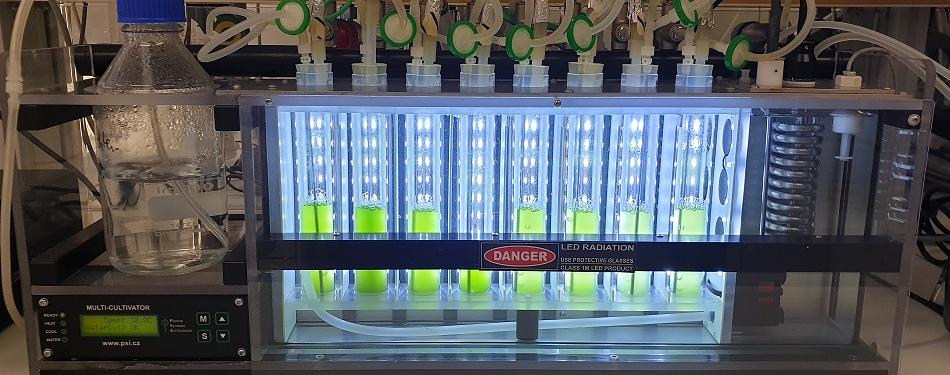The research group "Algae Biotechnology" is focused on developing algae-based systems for the production of platform chemicals as crude oil substitutes. To this end, we design and evaluate various cultivation systems and novel bioreactors for microalgae. With the help of these systems, we investigate the feasibility and technical implementation of biotechnological production approaches. In addition, the group focuses on basic research in various areas of algal physiology.
Our research activities
- Contact: Dr. Heiko Wagner
Funded by: Europäischer Fond für regionale Entwicklung (EFRE)
"New Green Chemistry" is a novel approach using photosynthesis to produce organic carbon without forming biomass. The organic carbon can be used as an industrial crude oil substitute or as an energy source. The advantage of the biomass-free approach is the significantly higher achievable efficiency from photon to product and the almost complete elimination of energy-rich or limited plant nutrients. In microalgae, the photosynthetically formed organic carbon is excreted in this new approach as glycolate, which can for example be fermented directly to methane under anaerobic conditions. In a second project, high-performance strains for glycolate production are produced via genetic crossbreeding and phototrophic biofilms are built up via crosslinking with the aim of operating algal biofilms as catalytic surfaces.
- Contact: Robert Röllig
Funded by: Deutsche Forschungsgemeinschaft (DFG) / DFG (WI 764/24-1)
Diatoms are one of the most ecologically successful representatives of phytoplankton/microalgae and play a significant role in the global carbon cycle and oxygen production. In order to effectively adapt to the rapidly changing light conditions of their aquatic environment, they require specialized photoreceptors that can initiate a targeted physiological response in the cell. Aureochromes are a newly described group of photoreceptors that are activated by blue light and may act as transcription factors to directly influence gene expression.
In this project, knock out strains of different aureochromes from the model organism Phaeodactylum tricornutum will be used to investigate the functions of aureochromes and thus gain insight into the genetic and metabolic network required for dynamic light adaptation of diatoms.

